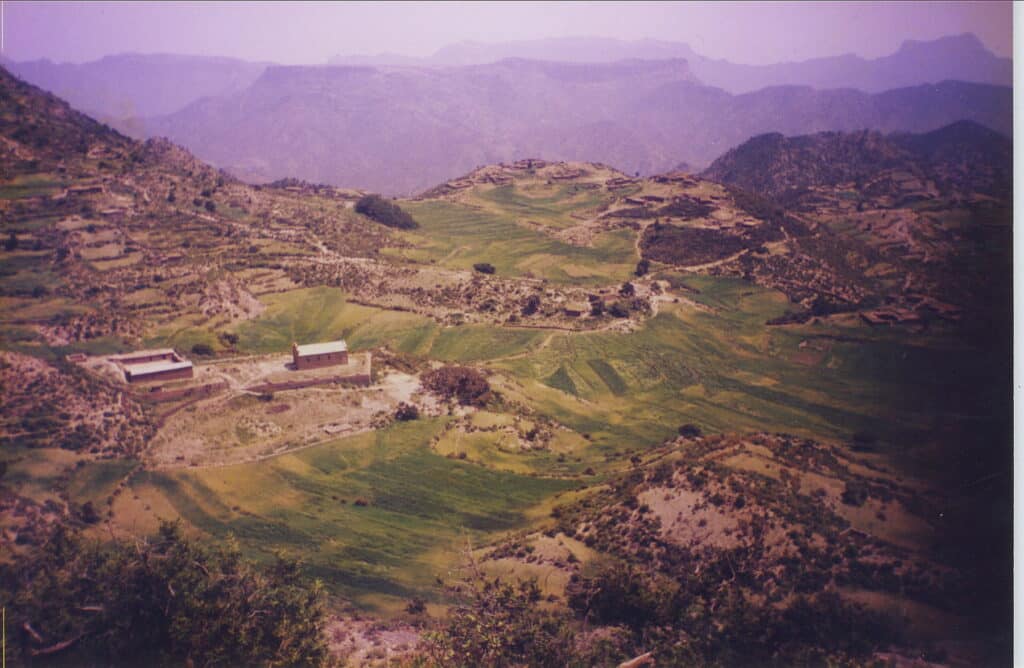Source: The Catholic Herald

A Catholic minority in Ethiopia’s northern Tigray region is “in danger of disappearing” after three and a half years of brutal and violent occupation by the Eritrean army, according to a recent article in the Italian press.
The tragedy of the Irob community is unfolding against the larger tragedy across the Tigray region caused by two years of civil war that has resulted in at least 600,000 deaths, millions of displaced persons and a famine, reports Avvenire, a leading Italian daily newspaper.
The Irob, who number around 50,000 people, have lived for centuries in the rural and mountainous territory on the border between Ethiopia and Eritrea, primarily as farmers. Speaking the Saho language and with the majority following the Catholic Faith, this has set them apart from the rest of the population of the surrounding region who speak Tigrinya and belong to the Ethiopian Orthodox Church.
The Irob region was occupied by Eritrean troops in November 2020 as civil war escalated in Ethiopia; Eritrean forces joined Ethiopian government forces fighting against the Tigray military forces. As a result of the Eritrean occupation, the Irob have seen their lands turned into what some are calling an open-air prison.
The interregional borders around Irob were closed, separating families and preventing humanitarian assistance getting in. The occupying Eritrean troops then began a process of forced assimilation by imposing the use of the Tigrinya language that is also the predominant language used in Eritrea, identification cards as well as imposing conscription, it is reported.
People have been arrested without trial and subsequently disappeared, following patterns in Eritrea under the rule of the military dictatorship of Isaias Afewerki during the past quarter century. There are “spies everywhere ready to denounce opponents”, and Catholic priests have found themselves targeted.
Eritrea is claiming that it was assigned the area of Irob under the Treaty of Algiers in 2000, which ended the 1998-2000 Ethiopia-Eritrean border war. But historically the Irob area has never been part of the former Italian colony of Eritrea, its defenders say, and its inhabitants have always been Ethiopians.
“We are victims of ethnic cleansing,” says Rita Kahsay, director of the Irob Anina Civil Society Association. “Our homes have been looted, those who oppose Isaias disappear and nothing more is heard of them. Eritrean officials gather the inhabitants in the towns and villages and tell them that either they agree to change nationality…or they must leave. But this is our land.”
In an Easter letter written to donors, the Catholic bishop of Adigrat, Tesfaselassie Medhin, spoke out about “unspeakable suffering, inequality, hardship and death due to two years of conflict, drought and lack of attention to essential needs” throughout Tigray, while highlighting the “marginalised communities of the Irob with their unimaginable suffering”.
Jan Nyssen, a professor at Ghent University in Belgium and a long-term commentator and researcher on Ethiopia, notes that the whole region of Tigray is experiencing “extreme starvation”, while over a million internally displaced persons (IDPs), including Irobs who fled their territory after being occupied by Eritrean forces, are seeking sanctuary in the towns of Tigray.
He explains that the civil war caused the crop yields of 2021 and 2022 to fail, while a drought that followed the war in 2023 caused the crops to fail once again. In Irob, where harvesting is inherently challenging due to the extreme geography, the famine is even more severe, Nyssen explains.
In addition, problems are exacerbated by the fact that Eritrean military forces, which were supposed to leave Tigray as part of the Cessation of Hostilities Agreement on 2 November 2022, have not left and are still present in the Irob district and other border areas, while militias associated with the neighbouring Amhara region – which has long had territorial disagreements with Tigray – have continued to hold control over the larger Western Tigray.
As a result, IDPs are unable to return home or work their land, and the “dire situation persists”, Nyssen says.
Photo: Kafna Village in the Irob region, Tigray, Ethiopia, 1 March 2007; image in the public domain.
